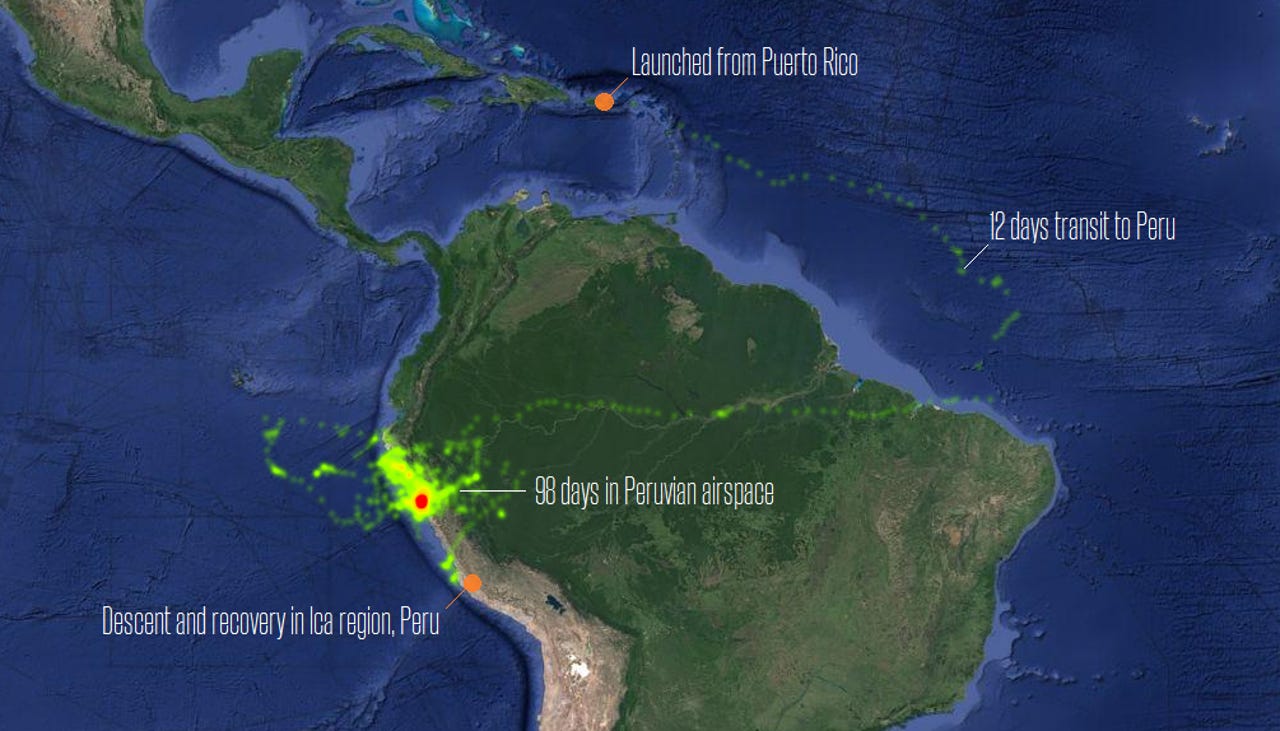Google's Project Loon: Now AI can steer its 4G-beaming balloons to right part of sky


To achieve a total of 98 days above Peru, the balloon made nearly 20,000 adjustments.
Google's new wind-predicting algorithms have kept one of its internet-beaming air balloons aloft in Peru's airspace for a total of 98 days.
Google's measure for success when it comes to Project Loon isn't just keeping balloons flying for 100 days, but ensuring they're not carried out to sea by air currents where they can't deliver wireless internet to the public.
Project Loon, which is part of the X unit of Google's parent company Alphabet, has used human-coded algorithms to determine how high or low in the stratosphere the air balloons need to be to catch a current that will take them in the desired direction.
However, according to Wired, updates to Loon's navigational system apply machine-learning techniques to the roughly 17 million kilometers of flight data it's collected to predict wind directions at different altitudes.
Its new algorithms, for example, allow a balloon's immediate heading to be sacrificed if a course ultimately leads to a better outcome, such as traveling towards the ocean to catch a current that then takes it back to an area over land.
"When a wind pattern couldn't be found to keep the balloon over land, our algorithms picked the next best option, sending the balloon drifting out over the Pacific Ocean to pick up easterly winds that could help it sail back into position," the Loon team said.
To achieve 98 days total above Peru, the balloon made nearly 20,000 adjustments. Google says after a 12-day trip from a launch site in Puerto Rico, the balloon spent most of the time at 20km latitude above Chimbote, which is located on the South Pacific coast about 400km north of Peru's capital, Lima.
Sal Candido, a former Google search engineer who worked on this Loon test, told Wired the navigation system uses reinforcement learning to improve the algorithm's behavior on the go with newly-collected data.
Google's UK AI team DeepMind used reinforcement learning to teach system like AlphaGo how to play games and solve various robotics challenges. However, the navigation system is heavily dependent on Google's datacenters.
"We have more machine learning in more of the right places. These algorithms are handling things more efficiently than any person could," Candido said.
Although it's wind-prediction system is not perfect, greater control over a balloon's direction will allow Project Loon to provide internet coverage with fewer balloons instead of attempting to blanket an area with them.
MORE ON GOOGLE
- Indonesia to chase Google for unpaid taxes: Report
- Google acquires location-based analytics firm Urban Engines
- Squished Gmail, Inbox messages? Google readies prettier-looking email for mobile
- Google's DeepMind claims major milestone in making machines talk like humans
- Google Chrome starts blocking Flash tracking for better battery life and performance
- TechRepublic: Five types of browser extensions every professional should have
- CNET: Google's Android Nougat is finally here for your Nexus phone and tablet